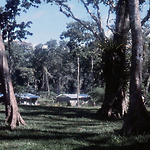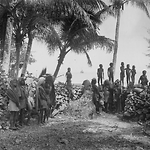Place: Santa Cruz Islands
Details
The Santa Cruz Islands lie in the southernmost part of the Solomon Islands, just beyond the area identified by archaeologists as Near Oceania, which includes the northern parts of the archipelago down to Makira (San Cristobal) and Ulawa, which were settled ten to twenty thousand years ago. The main Santa Cruz island is called Nendö. The settlement and language patterns in the Santa Cruz and Reef Islands are extremely complex and have formed over the previous 3,200 years after the Lapita peoples arrived via Near Oceania, down to Makira-Ulawa and out into Remote Oceania. There is evidence of obsidian (a volcanic glass rock used in tools and weapons due to its hard cutting abilities) imported into the Santa Cruz and Reef islands from the Bismarck Archipelago off New Guinea, once possibly the home of the Lapita peoples, or at least an area in which they remained for around a thousand years. This suggests the two areas remained in contact for approximately five hundred years.
Linguist Stephen Wurm originally classified the languages of the Santa Cruz Islands and the neighbouring Reef Islands as non-Austronesian. Linguists thought the presence of these languages evidenced a post-Lapita arrival from the Central Solomons. Archaeologists such as Roger Green and Matthew Spriggs suggested that there was a discontinuity some time after the earliest settlement that may relate to intrusion and settlement by non-Austronesian speakers. Linguists Darrell Tryon said these languages have been heavily influenced by Austronesian ones, and suggested that this may have taken place before the present peoples came to the Reef-Santa Cruz Group. However, a recent analysis by Malcolm Ross, Åshild Næss and Brenda Boerger suggests that these are in fact Austronesian languages and related to those of Vanuatu. (http://en.wikipedia.org/wiki/Reefs_%E2%80%93_Santa_Cruz_languages [accessed 21 Sept. 2011])
The various past arrivals of Polynesians into the southern Solomons further complicate disentangling the region's settlement patterns. The outlying atolls of the Reef Islands (Peleni, Nukapu, Nupani, and Matema) were settled by speakers of Polynesian languages probably from the 'Samoic-Outlier' branch of Polynesian, and probably derived from a Nuclear Polynesian proto-language. The Polynesian communities of Tikopia and Anuta are also nearby. Based on the contemporary traditions of Santa Cruz, there is a marriage pattern in which Polynesian-speaking women were imported into the more northerly communities as wives, which eventually changed the nature of the communities. This recent migration is clear through genealogies from the northern settlements of Santa Cruz. These 'mixed' peoples resemble Santa Cruz Islanders more than they do Polynesians. Anthropologist William Davenport believed that the people of the Santa Cruz Islands, the main Reef Islands, Utupua and Vanikolo are similar and more closely related to the peoples of the Central Solomons. They are easily distinguished from the Polynesian speakers from the Outer Reef and Duff Islands, and the darker peoples of the Western Solomons and even those of north Malaita.
Trade systems in the Eastern Solomon Islands were maintained well into the historical period and can be documented. There were three centres in the Eastern Outer Islands: the Polynesian Outliers, Santa Cruz-Main Reef Island, and Vanikolo-Utupua. This trade group was isolated: 250 kilometres separated them from the next trading cluster to the north: Makira, Santa Ana, Santa Catalina, Ugi and Ulawa. (Green and Cresswell 1976, 13-17)
Graciosa Bay on Nedö (Santa Cruz) Island was also the site of the first European attempt to settle in the Solomon Islands, an unsuccessful one by Mendaña and his expedition on his second voyage to the archipelago in 1595. (Allen and Green 1972; Green and Cresswell 1976)
Santa Cruz was an early port of call once European ships began to visit the Solomon Archipelago regularly-Bishop Patteson (q.v.) first went there in 1856-but was also one the hardest islands on which to establish the Melanesian Mission (q.v.). In 1859, Bishop Patteson (q.v.) took Moto, a Nukapu chief, to visit the Kohimarama School in New Zealand, hoping that he would ease the way for missionary work. The first attempt at forming a permanent Anglican base in the Solomon Islands was in 1862 on Santa Cruz, without success. Patteson visited Santa Cruz again in 1864, but was attacked and two companions were killed. Patteson was killed on nearby Nukapu in 1871 and Commodore Goodenough of the Royal Navy Australia Station was killed at Santa Cruz in 1875. Bishop John Selwyn (q.v.) returned castaways to the Reef Islands in 1877, and placed Mano Wadrokal (q.v.) and his wife on Santa Cruz in 1880. They remained there for five years and schools began to flourish. The first European missionary on Santa Cruz was Lister Kane in 1882-1885, replaced by Sam Gede of Makira in 1886 and Ben Islavno from Motlav (Motalava) in 1887. Lay missionary A. E. Forrest worked there in the 1890s, proving himself a gifted linguist.
In the colonial period the Santa Cruz Islands and all of the rest of the Eastern Solomons were administered from Kirakira on Makira, and from Vanikolo, but they were distant from the Protectorate's centre and often forgotten. After the Protectorate was extended in 1898 to include the Santa Cruz Islands, most official visits were made to Vanikolo Island. In the first half of the twentieth century until the war, the only presence there was a District Officer and a police detachment located on nearby Vanikolo Island, and the area was visited about once a year. The first plantation there was run by Lever Brothers on land acquired originally by Karl Oscar Svensen (q.v.) and sold to Levers in 1904. Between 1906 and 1922 the Manager was John (Jack) Mathews (q.v.) who married a local woman with whom he had two children. Life was extremely difficult for Mathews because the local people did not welcome the plantation and communications with the rest of the Solomons were poor-Levers' ships called only two or three times a year. In the 1920s, the government began to survey the islands but required an armed escort to do so. (Friedlaender et al. 2002, 45; Golden 1993, 385) The government had no permanent administrative presence in the area until 1925, after which it took about five years to impose colonial control.
When the Second World War reached the Solomons in 1942, the District Officer and police withdrew from the area, leaving only an Assistant Medical Officer, Guso Piko from Choiseul, on Vanikolo with no medical supplies. He paddled the eighty-two kilometres to Nidu on one occasion. Piko adjudicated in some sexual cases and made judgements which liberated women, encouraged promiscuity and angered many men. This was called the 'New Law'. Guso Piko then paddled off to the Reef Islands, where he remained for the war's duration. (Davenport 1970, 163-164) After the war the administration resumed its presence at a low level until the 1960s.
The Santa Cruz Islands are famous for their red-feather valuables trade which are described under the 'Material Culture' entry, under 'Forms of Wealth'.
Related entries
Published resources
Books
- Golden, Graeme A., The Early European Settlers of the Solomon Islands, Graeme A. Golden, Melbourne, 1993. Details
Book Sections
- Davenport, William H., 'Two Social Movements in the British Solomons that Failed and their Political Consequences', in Marion W. Ward;Susan C. Tarua;May Dudley (ed.), The Politics of Melanesia, Fourth Waigani Seminar, Research School of Pacific Studies, Australian National University and the University of Papua New Guinea, Canberra and Port Moesby, 1970, pp. 162-172. Details
Edited Books
- Green, Roger C., and Cresswell, M.M. (eds), Southeast Solomon Islands Cultural History: A Preliminary Survey, Bulletin 11, Royal Society of New Zealand, Wellington, 1976. Details
Journal Articles
- Allen, J. and R. C. Green, 'Mendana 1595 and the Fate of the Lost 'Almiranta': An Archaeological Investigation', Journal of Pacific History, vol. 7, 1972, pp. 73-91. Details
- Friedlaender, Jonathan S., Gentz, Fred, Green, K., and Merriwether, D.A., 'A Cautionary Tale on Ancient Migration Detection: Mitochondrial DNA Variation in Santa Crux Islands, Solomon Islands', Human Biology, vol. 74, no. 3, 2002, pp. 453-471. Details
Images
.png)
- Title
- A Santa Cruz Weaver, Te Motu Island (Santa Cruz Group)
- Type
- Image
- Date
- 1906
- Source
- Anglican Church of Melanesia
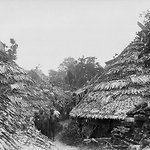
- Title
- A Street in Te Motu Island (Santa Cruz Group)
- Type
- Image
- Date
- 1906
- Source
- Anglican Church of Melanesia
.png)
- Title
- Among the Round Houses, Te Motu Island (Santa Cruz Group)
- Type
- Image
- Date
- 1906
- Source
- Anglican Church of Melanesia
.png)
- Title
- Chiefs of Graciosa Bay, Santa Cruz Island (Santa Cruz Group)
- Type
- Image
- Date
- 1906
- Source
- Anglican Church of Melanesia
.png)
- Title
- Commodore Goodenough's Memorial Cross at Carlisle Bay-Near View, Santa Cruz Island (Santa Cruz Group)
- Type
- Image
- Date
- 1906
- Source
- Anglican Church of Melanesia
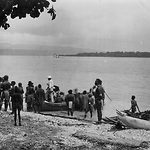
- Title
- Embarking at Nondu, showing Graciosa Bay, Te Motu Island (Santa Cruz Group)
- Type
- Image
- Date
- 1906
- Source
- Anglican Church of Melanesia
.png)
- Title
- Feather Money-Price of a Girl Bought as Teacher's wife, Santa Cruz Island (Santa Cruz Group)
- Type
- Image
- Date
- 1906
- Source
- Anglican Church of Melanesia
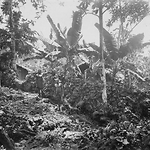
- Title
- Fortified Bush Village, showing part of wall, Te Motu Island (Santa Cruz Group)
- Type
- Image
- Date
- 1906
- Source
- Anglican Church of Melanesia
.png)
- Title
- Gamal at Te Motu Island (Santa Cruz Group)
- Type
- Image
- Date
- 1906
- Source
- Anglican Church of Melanesia
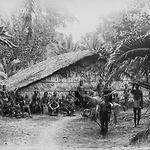
- Title
- Gamal in School Village, Te Motu Island (Santa Cruz Group)
- Type
- Image
- Date
- 1906
- Source
- Anglican Church of Melanesia
.png)
- Title
- Graciosa Bay, Santa Cruz Island (Santa Cruz Group)
- Type
- Image
- Date
- 1906
- Source
- Anglican Church of Melanesia
.png)
- Title
- In the Village, Matema Island (Reef Islands, Swallow Group)
- Type
- Image
- Date
- 1906
- Source
- Anglican Church of Melanesia
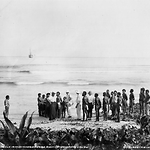
- Title
- Locality at Otivi Village, Santa Cruz Island, where the Norfolk Island Missionaries were shot (Santa Cruz Group)
- Type
- Image
- Date
- 1906
- Source
- Anglican Church of Melanesia
.png)
- Title
- Men at Santa Cruz Island (Santa Cruz Group)
- Type
- Image
- Date
- 1906
- Source
- Anglican Church of Melanesia
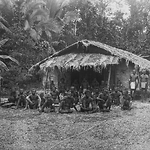
- Title
- Missionary's House and School People, Te Motu Island (Santa Cruz Group)
- Type
- Image
- Date
- 1906
- Source
- Anglican Church of Melanesia
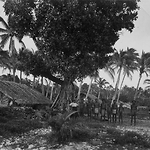
- Title
- Otivi Village, Santa Cruz Island (Santa Cruz Group)
- Type
- Image
- Date
- 1906
- Source
- Anglican Church of Melanesia
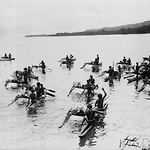
- Title
- People of Santa Cruz Island in Canoes, trading with Southern Cross (Santa Cruz Group)
- Type
- Image
- Date
- 1906
- Source
- Anglican Church of Melanesia
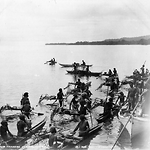
- Title
- People of Santa Cruz Island in Canoes, trading with Southern Cross (Santa Cruz Group)
- Type
- Image
- Date
- 1906
- Source
- Anglican Church of Melanesia
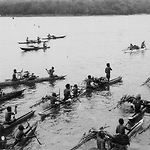
- Title
- People of Santa Cruz Island in Canoes, trading with Southern Cross (Santa Cruz Group)
- Type
- Image
- Date
- 1906
- Source
- Anglican Church of Melanesia
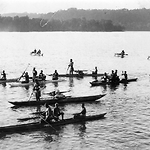
- Title
- People of Santa Cruz Island in Canoes, trading with Southern Cross (Santa Cruz Group)
- Type
- Image
- Date
- 1906
- Source
- Anglican Church of Melanesia
.png)
- Title
- People of Santa Cruz Island in Canoes, trading with Southern Cross (Santa Cruz Group)
- Type
- Image
- Date
- 1906
- Source
- Anglican Church of Melanesia
.png)
- Title
- Round Houses and Dancing Ground, Te Motu Island (Santa Cruz Group)
- Type
- Image
- Date
- 1906
- Source
- Anglican Church of Melanesia
_Te_Motu.png)
- Title
- Round Houses and Dancing Ground, Te Motu Island (Santa Cruz Group)
- Type
- Image
- Date
- 1906
- Source
- Anglican Church of Melanesia
.png)
- Title
- Round Houses of Te Motu Island (Santa Cruz Group)
- Type
- Image
- Date
- 1906
- Source
- Anglican Church of Melanesia
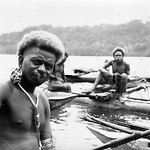
- Title
- Santa Cruzian trading with the Southern Cross
- Type
- Image
- Date
- 1906
- Source
- Anglican Church of Melanesia
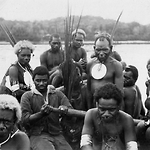
- Title
- Santa Cruzians going ashore in the boats of the Southern Cross
- Type
- Image
- Date
- 1906
- Source
- Anglican Church of Melanesia
.png)
- Title
- School House and Church, Te Motu Island (Santa Cruz Group)
- Type
- Image
- Date
- 1906
- Source
- Anglican Church of Melanesia
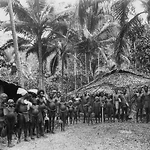
- Title
- School People and Others ay Nimbi, Te Motu Island (Santa Cruz Group)
- Type
- Image
- Date
- 1906
- Source
- Anglican Church of Melanesia
.png)
- Title
- School Women by the Well, Te Motu Island (Santa Cruz Group)
- Type
- Image
- Date
- 1906
- Source
- Anglican Church of Melanesia
.png)
- Title
- Te Motu Island Women and Round Houses (Santa Cruz Group)
- Type
- Image
- Date
- 1906
- Source
- Anglican Church of Melanesia
.png)
- Title
- The Landing Place, Te Motu Island (Santa Cruz Group)
- Type
- Image
- Date
- 1906
- Source
- Anglican Church of Melanesia
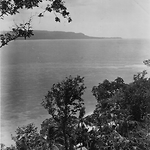
- Title
- The West Passage, Graciosa Bay, from Te Motu Island (Santa Cruz Group)
- Type
- Image
- Date
- 1906
- Source
- Anglican Church of Melanesia
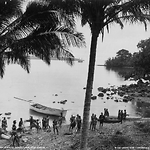
- Title
- View of Graciosa Bay, Santa Cruz Island (Santa Cruz Group)
- Type
- Image
- Date
- 1906
- Source
- Anglican Church of Melanesia
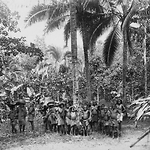
- Title
- Women at Nimbi, Te Motu Island (Santa Cruz Group)
- Type
- Image
- Date
- 1906
- Source
- Anglican Church of Melanesia
.png)
- Title
- Women of Te Motu Island (Santa Cruz Group)
- Type
- Image
- Date
- 1906
- Source
- Anglican Church of Melanesia
.png)
